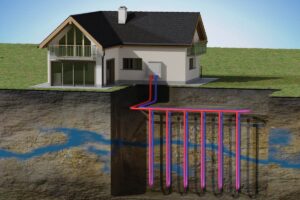 My wife and I recently purchased some large Desert Rose plants to place on our west-facing front porch. This porch gets extremely hot during summer afternoons, so these beautiful plants should enjoy their new environment. Our porch doesn’t look like the plant’s native environments of tropical Africa or Arabia. But the direct sunlight, its reflective surface temperatures and Arkansas’ humidity produce the heat, light and moisture conducive for these hardy hot-weather plants.
My wife and I recently purchased some large Desert Rose plants to place on our west-facing front porch. This porch gets extremely hot during summer afternoons, so these beautiful plants should enjoy their new environment. Our porch doesn’t look like the plant’s native environments of tropical Africa or Arabia. But the direct sunlight, its reflective surface temperatures and Arkansas’ humidity produce the heat, light and moisture conducive for these hardy hot-weather plants.
Each morning when we retrieve the newspaper we notice there are no blooms or color on our new plants. But when we head outside in the afternoon, we are greeted with dozens of beautiful blooms, provided the sun is shining.
We enjoy sitting on that porch during the evenings. With coffee in hand, we enjoy watching the sun set upon our neighborhood. One evening as we were sitting there, I saw a movement out of the corner of my eye. I looked to the left but saw nothing but one of the Desert Rose plants.
A minute later I saw movement out of the corner of my eye again. This time I just continued to stare at that plant. I saw one of the blooms shake like it had a chill. There was no breeze, so I thought that an insect or one of our cute little lizards was on the plant stem causing the movement. But then I saw another bloom shake, and then another, and then another. The movement continued for several minutes until all of the blooms were closed. As the sun dropped below the horizon, it seemed as though every bloom had a device that retracted the petals.
It was at that moment that I realized the closing of each bloom was energy in action thanks to Mother Nature. It really was a magic moment for me because I started thinking of the ways that nature relates to the same energy efficiency measures and messages we have shared for years.
One of my seminar focal points is “all energy comes from the sun.” Thus, a perfect example is the Desert Rose bloom. It remains wide-open to collect as much solar energy and carbon dioxide as possible for survival. The energy collected is essential and must not be wasted. So, the bloom closes at sunset and forms a thermal envelope. Sound familiar? We’ve been teaching about thermal envelopes for years – that is the kind used for your house.
Simply stated, if your house has minimal air infiltration and is properly insulated, you have a good thermal envelope. Furthermore, when the energy you purchase is utilized efficiently, the by-products are a comfortable home, manageable utility bills and conservation of resources.

info@philliprye.com, or call 501-653-7931.
Another example is the robin’s nest on top of my porch column. Being an architect, I enjoy a good construction project. I watched the bird build the nest using mud and straw. The nest is practically airtight, except at the top. Then, Mother Robin places her feather-insulated body over the top of the nest, keeping the eggs or hatchlings dry and at the desired temperature. This example of nature and nests is a perfect segue.
Now is a great time for humans to inspect their nests. Does your nest need more attic insulation to improve the comfort within? If you are not sure, give me a call at my office at 501-653-7931.









